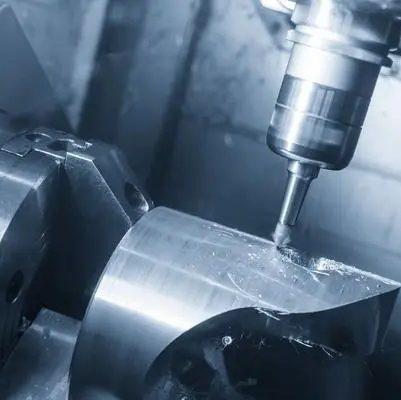How Can I Select the Best CNC Milling Machine for Copper and Brass Parts?

There are many things to take into account when choosing the best CNC milling machine for brass and copper parts, such as the intended part size, complexity, and production volume. This comprehensive guide will assist you in choosing the finest CNC milling machine for copper and brass machining:
1. Part Size and Complexity:
l Consider the maximum part size: Prior to machining, ascertain the largest dimensions of the workpiece. The machine's travel limits and worktable size ought to accommodate the intended part size.
l Assess part complexity: Assess the intricacy of the components you intend to manufacture. Several axes of motion, complex shapes, or tight tolerances may call for the use of a more sophisticated tool with greater accuracy and capacity.
2. Production Volume:
l Estimate production volume: Determine approximately how many pieces you will require to manufacture. Consider investing in a machine with multiple spindles, automated tool changers, or faster machining speeds if you need to achieve high production rates.
l Evaluate machine durability: Verify that the machine you select is capable of withstanding the demands of regular production runs. Take into account variables such as tool life expectancy, spindle power, and machine rigidity.
3. Material Compatibility:
l Ensure brass and copper compatibility: Make sure the equipment can handle copper and brass. To operate best with these materials, some machines might need specialized tool holders, cutting fluids, or spindle configurations.
l Consider material removal rates: Select a machine that can manage the material removal rates needed for copper and brass, with enough spindle power and torque. When cutting these materials, more cutting force might be needed than when cutting softer materials.
4. Machine Features and Capabilities:
l Precision and accuracy: To make sure the machine satisfies your tolerance requirements, consider its precision and accuracy specifications. Take into account elements such as encoder feedback systems, servo motor resolution, and ball screw accuracy.
l Control system: Select a machine that works with your CAD/CAM software and has an easy-to-use control system. Think about attributes like machine monitoring capabilities, graphical user interface, and ease of programming.
l Tooling options: Examine the tool holding mechanism of the machine and make sure your favorite cutting tools work with it. Think about things like the tool shank size, spindle taper, and the number of tool changers that are available.
l Automation and robotics: If you have repetitive or high-volume production tasks to perform, consider whether automation or robotics are necessary. Think about features like robotic loading/unloading systems, pallet changers, and automated tool changers.
5. Machine Maintenance and Support:
l Evaluate service availability: Check if the machine's distributor or manufacturer offers reliable, timely service in your area. Take into account elements like response times, parts availability, and technical know-how.
l Consider maintenance requirements: Assess the machine's user-friendliness and maintenance schedule. Take into account elements like service manual availability, accessibility, and lubrication points.
l Assess warranty coverage: Examine the machine's warranty information and coverage to learn more about the manufacturer's dedication to offering top-notch goods and customer support.
You can choose the best CNC milling machine for the precise machining of copper and brass that you need by carefully weighing these factors. This will ensure robust components, effective manufacturing, and a successful end product.
- Art
- Causes
- Crafts
- Dance
- Drinks
- Film
- Fitness
- Food
- Spellen
- Gardening
- Health
- Home
- Literature
- Music
- Networking
- Other
- Party
- Religion
- Shopping
- Sports
- Theater
- Wellness


